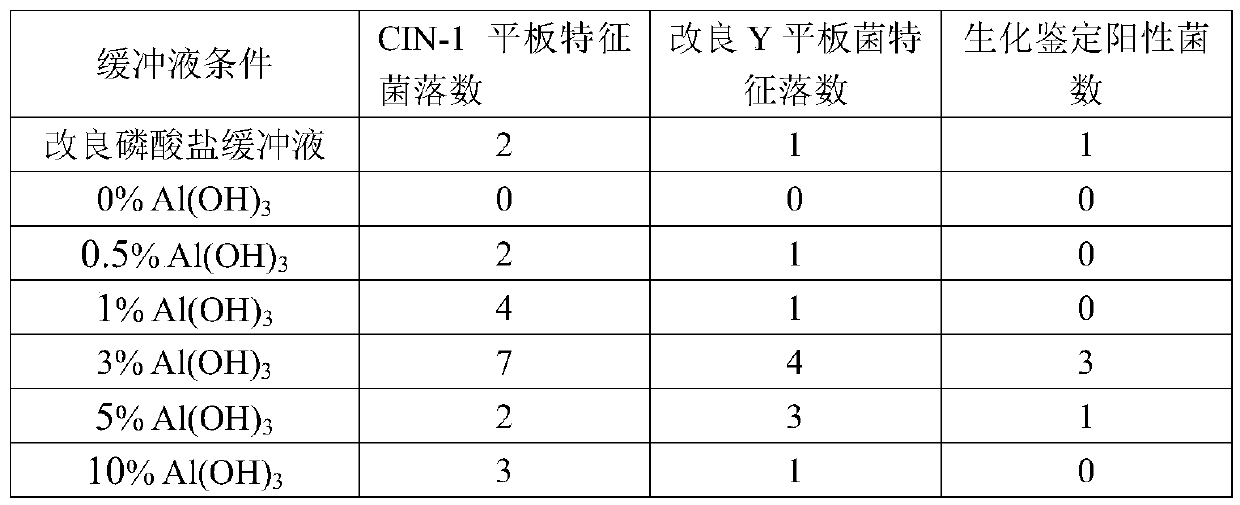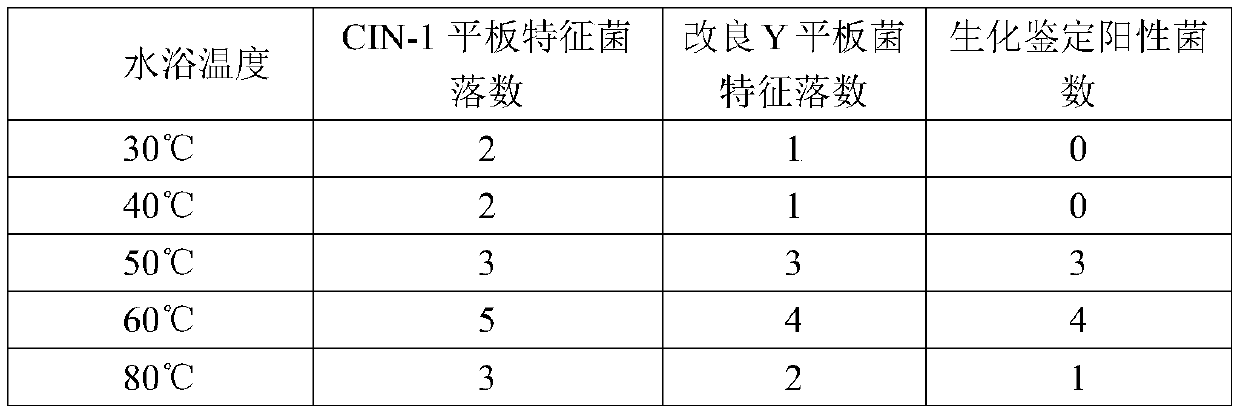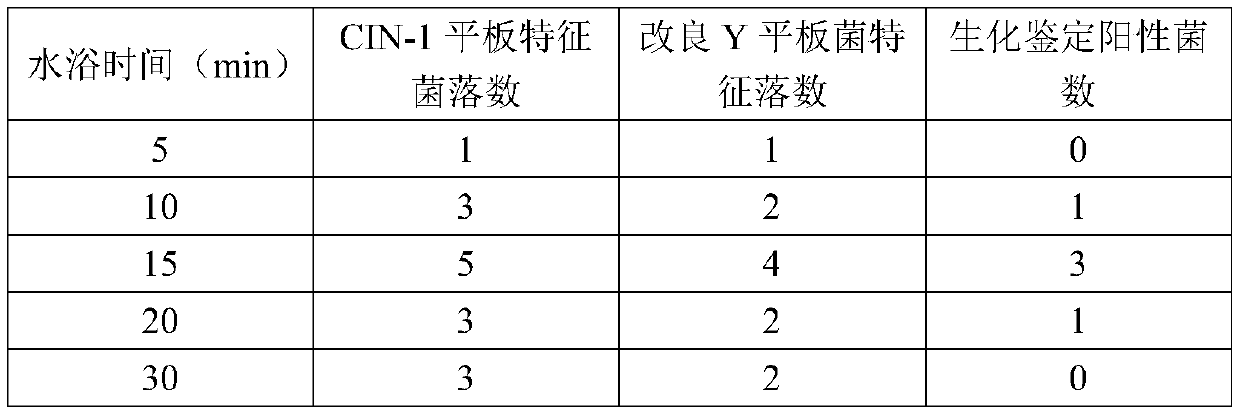Method for detecting Y. enterocolitica
A technology for Yersinia and enterocolitis, applied in the field of microbial detection, can solve the problems of complicated operation steps, inability to achieve rapid detection, time-consuming, etc., to reduce interference, improve detection rate and accuracy of detection results, reduce The effect of false positives
- Summary
- Abstract
- Description
- Claims
- Application Information
AI Technical Summary
Problems solved by technology
Method used
Image
Examples
Embodiment 1
[0036] Example 1: Al(OH) 3 concentration screening
[0037] Take 5 parts of 225ml containing different concentrations of Al(OH) 3 PBS buffer solution (concentration of PBS buffer solution is 0.02mol / L) in five sterile homogeneous bags (Al(OH) in five homogeneous bags 3 The mass concentration is respectively 0.5%, 1%, 3%, 5%, 10%), and 25g Yersinia enterocolitica positive sample is added in each homogeneous bag (specifically adopting Yersinia enterocolitica containing Yersinia enterocolitica Bacteria cold chain meat), homogenized for 30s to prepare the sample bacterial liquid.
[0038] In addition, use 225ml of modified phosphate buffer without Al(OH) 3 PBS buffer solution (0.02mol / L PBS) was used as a contrast solution, and 25 g of Yersinia enterocolitica positive samples were added to each contrast solution, and homogenized for 30 seconds to prepare a sample bacterial solution.
[0039] According to the detection method stipulated in GB 4789.8, operations such as bacteria...
Embodiment 2
[0043] Embodiment 2: the screening of water bath heat treatment temperature
[0044] Get 25g of Yersinia enterocolitica positive sample (specifically cold chain meat containing Yersinia enterocolitica), add 225mL containing 3% Al(OH) 3 In a sterile homogenization bag of PBS buffer solution, homogenize for 30 seconds to obtain the sample bacterial solution. Take 5mL of sample bacterial liquid, and heat-treat them in water baths at 30°C, 40°C, 50°C, 60°C, and 80°C for 15 minutes to kill non-target bacteria. Then, according to the detection method stipulated in GB 4789.8, operations such as bacterial enrichment, streak separation, and biochemical tests were carried out in sequence, and the test results were obtained, as shown in Table 2 for details.
[0045] Table 2 The number of detected colonies of different water bath heat treatment temperatures
[0046]
[0047] It can be seen from Table 2 that when the water bath heat treatment temperature is not higher than 60°C, the n...
Embodiment 3
[0048] Embodiment 3: the screening of water bath heat treatment time
[0049] Get 25g of Yersinia enterocolitica positive sample (specifically cold chain meat containing Yersinia enterocolitica), add 225mL containing 3% Al(OH) 3 In a sterile homogenization bag of PBS buffer solution, homogenize for 30 seconds to obtain the sample bacterial solution. Take 5mL of the sample bacterial solution and heat-treat in a 60°C water bath for 5min, 10min, 15min, 20min, and 30min, respectively, to kill non-target bacteria. According to the detection method stipulated in GB 4789.8, operations such as bacterial enrichment, streak separation, and biochemical tests were carried out in sequence, and the test results were obtained. See Table 3 for details.
[0050] Table 3 The number of detected colonies of different water bath heat treatment temperatures
[0051]
[0052] It can be seen from Table 3 that when the water bath time does not exceed 15 min, the number of detected colonies increa...
PUM
 Login to View More
Login to View More Abstract
Description
Claims
Application Information
 Login to View More
Login to View More - R&D
- Intellectual Property
- Life Sciences
- Materials
- Tech Scout
- Unparalleled Data Quality
- Higher Quality Content
- 60% Fewer Hallucinations
Browse by: Latest US Patents, China's latest patents, Technical Efficacy Thesaurus, Application Domain, Technology Topic, Popular Technical Reports.
© 2025 PatSnap. All rights reserved.Legal|Privacy policy|Modern Slavery Act Transparency Statement|Sitemap|About US| Contact US: help@patsnap.com



